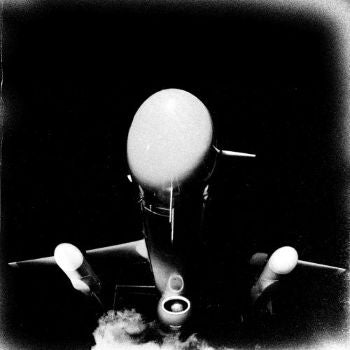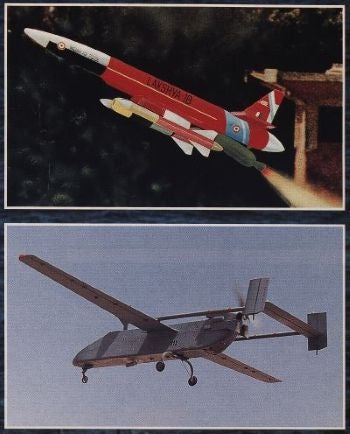Drone Wars: Tracing the Growth of a Worldwide Market for Military Drone Technology
As Rear Admiral William C. Bowes’ delivered the keynote address at the North Atlantic Treaty Organization’s (NATO) 1988 symposium on “Unmanned Aerial Vehicles” (UAVs), he recounted the long history of United States military interest in “drones” as a cautionary tale for the technology’s future. Bowes, who had just recently been appointed as Director of the newly established Unmanned Aerial Vehicles Joint Project in the United States Department of Defense, noted “UAVs are certainly not a new capability, although their road to acceptance and continued use by the U.S. Services has not been a smooth one.”1 Bowes recalled to his listening audience of NATO nations’ military officials that the possibilities of a “pilotless airplane” performing the same actions in war as a piloted airplane had captured U.S. war planners’ strategic imagination as early as the First World War. Yet, despite repeated efforts to integrate drones into war during major conflicts like the World Wars and the Cold War, U.S. drone technologies faced recurrent obstacles in functionality and funding. He lamented that though the Vietnam War had ushered in the United States’ first mass deployment of surveillance drones, U.S. defeat undercut the need for drone technology, resulting in thousands of UAVs being “mothballed.”2 Bowes characterized the history of U.S. military drone adoption as one defined by starts and stops, warning that despite growing prospects for UAV use in war, another moment of stasis everthreatened the militant embrace of drones. The challenge he presented to the NATO community in his keynote address was to overcome this spasmodic pattern and cement drone technology’s place within arsenals.3
Admiral Bowes spoke a truth that belied reality. While U.S. military spending upon, and operational deployment of, drones diminished in the wake of the Vietnam War, interest in UAVs within the intelligence community and military services had remained strong. Furthermore, the 1980s witnessed a dramatic rise in both corporate and scholarly interest in drone technology.
 | Drone-focused institutions outside of but connected to national militaries, like the U.S. based Association for Unmanned Vehicle Systems International (AUVSI), or the United Kingdom’s Royal Aeronautical Society, began organizing annual international conferences focused on “Unmanned Aerial Vehicles” and “Remotely Piloted Vehicles” (RPVs) in the late-1970s that have continued up to today. Through conferences and publications, the corporate manufacturers, military officials, and university professors who made up these groups’ memberships regularly met and discussed drone technology’s potential utilities for warfronts and homefronts. |
It is with an eye towards analyzing these sorts of informal spaces, where arms makers and admirals rubbed elbows and talked shop, but more importantly engaged in the business of drone war, which brought me back to the Linda Hall Library in 2023 as its first Pearson Fellow in Aerospace History.
A worldwide arms market for drone technology emerged in the 1980s and 1990s. This explosion of international interest in UAVs, RPVS, or drones coincided with a shift in political economy many term “Neoliberalism.” This re-embrace of free market capitalism witnessed national governments reduce regulations over financial markets, sign international trade agreements, hinder labor unions, outsource manufacturing, and engage in austerity measures that privatized or added means testing to social services. Yet, while the neoliberal era proclaimed a reduction in state influence upon the economy, this was hardly the case for the sale of armaments like drones whose manufacture was defined by corporations’ government contracts and military contacts.
Doing business in drones was the goal in 1988 as representatives from NATO nations’ militaries met in San Francisco. Following Admiral Bowes’ keynote addressing the history of U.S. drone war, aircraft manufacturers including Lockheed and British Aerospace gave panel presentations that ranged in focus from ground control stations to automated search algorithms that could aid surveillance drones acquire bombing targets.4 The conference concluded with a roundtable discussion between British, French, and U.S. officials who answered questions from the audience. The opening question asked panelists their “views as to business prospects for unmanned air vehicles” with all national representatives responding positively. The U.S. official boasted forthcoming competitions for both short range and endurance surveillance drones that promised government contracts for the winning drone manufacturer. The French and British representatives, however, bemoaned “complex” situations and military services that were still “sitting on the fence” in their attitude towards UAVs.5 Admiral Bowes had highlighted a similar issue of interservice disfunction in his keynote, explaining that the U.S. Department of Defense created its Unmanned Aerial Vehicle Joint Project to provide central management over what had been disunified drone development projects between the Air Force, Army, and Navy. He suggested a new “corporate approach to the exploitation of unmanned vehicle technology” would help overcome “years of false starts and inter-service rivalry.”6
| Technical capabilities mattered alongside capital exchange. Other questions at the 1988 NATO UAV symposium roundtable included “How quickly will we get autonomous systems?” to which panelists bemoaned “operational types have to be convinced.”7 Someone also inquired about “the feasibility of developing an unmanned fighter aircraft” which panelists insisted the “consensus seemed to be that technologically the concept was perfectly feasible. Courage and the political will to succeed were the most important things needed.”8 Building drones capable of flying themselves to bomb other people seemed easier than convincing the public that such a machine was a necessary war capability. This reticence to make combat drones pervaded the U.S. Department of Defense in the late-1980s. The new Unmanned Aerial Vehicles Joint Project had specifically excluded combat drones from U.S. development projects, instead focusing on drones that could surveil enemies, or disrupt enemy communication systems. Yet, despite official hesitancy, the feasibility of combat drones pervaded the discussions and panel presentations at the NATO symposium. |  The world market for military drone technology reached "beyond Europe" in the late twentieth century to include major UAV producers in Egypt, India, Israel, South Africa, and many other spaces. |
Many military officials and aircraft manufacturers that attended the 1988 NATO symposium on UAVs participated in other non-state organizations focused on drone technologies. Throughout the 1980s and 1990s, the U.S. based organization Association for Unmanned Aerial Vehicles International (AUVSI) brought audiences from around the world together at destination locations like Disney World.9 Similarly, the Royal Aeronautical Society held a bi-annual Remotely Piloted Vehicles conference at the University of Bristol. At these sorts of events, military officials mingled with drone manufacturers, attending panels that proclaimed a drone’s military capabilities, or allowed potential customers the ability to “Try it Before you Fly It.”10 Demonstration airfields were arranged as just one exciting component within a slew of social events and cocktail hours that supplemented conference panels and roundtables.
U.S. and U.K. based drone conferences attracted a diversity of international representatives as the market for UAV technology grew in the final two decades of the twentieth century. The printed conference programs of groups like AUVSI demonstrate the presence of emissaries from around the world who presented papers boasting their own nation’s military drone projects or alternatively invited submissions from attendant manufacturers to fulfill open government purchasing contracts. At any one drone conference, for example the Royal Aeronautical Society’s Fourth International Conference on Remotely Piloted Vehicles held in 1984, attendants could meet and hear from military or manufacturer representatives attending from countries including Israel, Switzerland, India, China, South Africa, Sweden, Syria, Australia, West Germany, the United States, and the United Kingdom, among others.11
Despite the proliferation of drone technology throughout military arsenals around the world in the last decades of the twentieth century, the question of UAVs performing bombing missions remained seriously debated by military officials up through the 1990s. Though there are several examples of drones flying bombing missions in the twentieth century, the September 11th attacks on the World Trade Center and the U.S. declaration of the Global War on Terror largely ended U.S. military officials’ reservations about drones performing combat roles. Up until the twenty-first century, most military drones remained limited to serving as targets in firing practices, undertaking surveillance operations, or flying as irritants that jammed enemy communications systems. Premier drone platforms of the late-twentieth century, for example Northrup Grumman’s “Predator” drone, were initially built and flown as an endurance surveillance platform which was not retrofitted to carry missiles until after 2001. Weaponization provided additional functionality to drone platforms as appealing products in an ever-expanding world market. Remembering the now long-gone hesitancy to enable drones to kill helps rekindle a serious question in determining just war conduct. Should a person operating a war machine from thousands of miles away be able to push a button and end lives? Are autonomous killing machines a desirable step for humanity? In what ways do drones, far more disposable than an aircraft piloted by a person, make waging war easier, less costly, more likely than ever to erupt? If an adversary might develop and deploy autonomous drones does this necessitate the self-defensive development of similar capabilities? Does a profit motive within war making incentivize making war? Instead of a continued arms race, might a new political will favoring diplomacy, disarmament, truth and reconciliation be imaginable? If not, in what new ways might drones and autonomized weapons platforms threaten the world?
Returning to the Linda Hall Library provided me with the ideal sources and setting to think through these questions. As I enjoyed my time examining historical treasures in the special collections reading room or sipped a cocktail during one of the Library’s pre-event President’s Circle receptions, the bust of the physicist-philosopher Albert Einstein repeatedly caught my eyes. What might this genius of the twentieth century, a life-long pacifist scarred by a personal experience of World War I who long-advocated for disarmament, think about the current reality of forever wars waged around the world? Perhaps now, more than ever, it is necessary to give serious consideration to his provocation: “You cannot simultaneously prevent and prepare for war.”
______________________________________________________________________________________________________________________
1 William C. Bowes, Keynote Address, North Atlantic Treaty Organization, Advisory Group for Aerospace Research and Development, AGARD Conference Proceedings No. 436, Guidance and Control of Unmanned Air Vehicles, Letterman Army Institute of Research, Presidio of San Francisco, California, 4-7 October 1988, K-1, Linda Hall Library.
2 Ibid, K1.
3 Ibid, K1-K4.
4 Charles T. Elliot, North Atlantic Treaty Organization, Advisory Group for Aerospace Research and Development, AGARD Advisory Report No. 260, Technical Evaluation Report on the Guidance and Control Panel Symposium on Guidance and Control of Unmanned Air Vehicles, 3, Linda Hall Library.
5 Ibid, 5.
6 Ibid, 1.
7 Ibid, 5.
8 Ibid.
9 Association for Unmanned Vehicle Systems International, AUVSI ’96 Proceedings, July 15-19, 1996, Walt Disney World’s Contemporary Resort, Orlando Florida, Linda Hall Library.
10 R. A. Walster, “System Simulation – ‘Try it Before You Fly It,’” Remotely Piloted Vehicles (RPVs) Twelfth International Conference Papers, 9-11 September 1996, Bristol, United Kingdom, Paper 17, Linda Hall Library.
11 Royal Aeronautical Society and the University of Bristol, Remotely Piloted Vehicles Fourth International Conference, Bristol, UK, 1-11 April 1984, Linda Hall Library, List of Participants, P.1 - P.4, Linda Hall Library.





